
ESPAÑOL
Cliente: Autoridades locales
Arquitecto: Eero Saarinen
Ingeniero Estructural: Haanskarl Bandel
Altura: 192 metros
Peso: 17.246 toneladas
Localizado a orillas del río Mississipi, el Arco de St. Louis se erigió espléndido en el Jefferson Nacional Expansion Memorial, un parque de 192 hectáreas en el que se conmemoraron diversos acontecimientos históricos. Thomas Jefferson fue quien tuvo la visión de expandir las tierras hacia el Oeste, por lo que el gran Arco de St. Louis hizo de puerta de entrada para conquistar el Oeste de los Estados Unidos de América. El diseño del famoso monumento estuvo a cargo del prestigioso arquitecto Eero Saarinen (1910-1961), quien diseñó una estructura sobrecogedora mediante un arco catenario. Gracias a los cambios que introdujo el Ingeniero Estructural Haanskarl Bandel aumentando el peso del gran arco en su parte inferior, el diseño de Eero Saarinen se pudo llevar a cabo. Las medidas de la estructura tienen relación, ya que la altura es igual a la longitud de su base, 192 metros. Las secciones del arco catenario están compuestas por un triángulo equilátero de 16.5 metros de lado en el arranque y 5.2 metros en la cima.

Imagen de la plataforma superior de observación y mirador desde la que se puede ver una vista panorámica de la ciudad de St. Louis... / Image of the upper platform look-out from which you can see a panoramic view of the city of St. Louis ...

La majestuosa obra está construida con hormigón armado y revestida con placas de acero inoxidable y de preciosas coloraciones. Hasta los 91 metros de altura se construyó íntegramente con hormigón armado y se revistió con placas de acero inoxidable; desde los 91 metros hasta la cima, se construyó con fibra de carbono para aligerar su peso y también se revestiría con piezas irregulares de acero inoxidable. El interior del enorme monumento es hueco y cuenta con dos escaleras de emergencia de 1076 escalones cada una; además, unos ascensores laterales tipo tranvía, se utilizan para subir a la plataforma superior de observación y mirador. Desde unas ventanas que se encuentran a ambos lados de la plataforma de observación en la parte superior, se puede divisar una vista panorámica del río Mississipi y de toda la ciudad de St. Louis. El famoso Arco de St. Louis no sólo se ha convertido en un auténtico icono para esta ciudad sino que además ostenta el record como el monumento más alto del mundo en la actualidad debido a sus 192 metros del altura en su punto más alto.

El texto de este artículo se incluye en mi libro titulado "CONSTRUCCIONES FAMOSAS" / The text of this item is included in my book title "FAMOUS CONSTRUCTIONS" Español - English
by José Miguel Hernández Hernández
Publisher, Writer and Architectural Photographer
http://www.jmhdezhdez.com/
Video promotional
ENGLISH
Client: Local Authorities
Architect: Eero Saarinen
Structural Engineer: Haanskarl Bandel
Height: 192 meters
Weight: 17 246 tonnes
Located on the banks of the Mississippi River, the St. Louis Arch was erected splendid in the Jefferson National Expansion Memorial, a park of 192 hectares which commemorated events of history. Thomas Jefferson was the one who had the vision to expand the land to the west, so the great Arch of St. Louis was the gateway to conquer the western United States. The design of the famous monument was given by renowned architect Eero Saarinen (1910-1961), who designed a structure with a catenary arch overwhelming. Thanks to changes introduced by the Structural Engineer Haanskarl Bandel increasing the weight of the large arch at the bottom, the design of Eero Saarinen was able to carry out. The measures of the structure are related, since the height is equal to the length of its base, 192 meters. Catenary arch sections are composed of an equilateral triangle of side 16.5 meters and 5.2 meters starting at the top.

The majestic piece is made of reinforced concrete and lined with stainless steel plates and beautiful colors. Up to 91 meters high was built entirely of reinforced concrete and is overlaid with stainless steel plates, from 91 meters to the top, was built with carbon fiber to lighten its weight and also would be of irregular pieces of stainless steel. The interior of the huge monument is hollow and has two emergency stairwells of 1076 steps each, in addition, a side-rail lifts are used to climb to the upper observation deck and gazebo. From some windows on both sides of the observation deck at the top, you can see a panoramic view of the Mississippi River and the entire city of St. Louis. The famous St. Louis Arch has not only become a true icon for the city but also has the record as the tallest monument in the world today because of its 192 meters high at its highest point.

"Images Gateway Arch, St. Louis, Missouri, USA"
Image 1-3-4-5-6 Copyright © Josh Hallet, Flickr, Blog
Image 2 Copyright © Daniel Schwen
"Text" Copyright © José Miguel Hernández Hernández
Editor, Escritor y Fotógrafo de Arquitectura /
Publisher, Writer and Architectural Photographer
Todos los derechos reservados / All rights reserved
www.jmhdezhdez.com
Others Monuments / Otros Monumentos
Christ the Redeemer
Rio de Janeiro, Brasil
Various Artists
Statue Of Liberty
New York, USA
Frédérick-Auguste Bartholdi
Pisa Tower
Pisa, Toscana, Italy
Bonanno Pisano and others
Chichén Itzá Pyramid
Yucatán, Mexico
Mayan Dinasty
MUY IMPORTANTE!!! VERY IMPORTANT!!!
Deja tu comentario sobre este reportaje al pie de este post donde dice "Publicar un comentario en la entrada"; me será de gran valor para seguir mejorando este sitio web y te contestaré con la mayor brevedad posible... Muchas gracias!
No obstante, si te ha resultado interesante este reportaje y también el Blog en general, por favor, no dudes en hacerte Fan de la página de Fans del Blog de José Miguel Hernández Hernández en Facebook aquí
Nota importante: Una vez que hayas entrado en la página de Fans del Blog en Facebook, con sólo hacer click en el botón de "Me gusta", a partir de ese momento estarás al tanto de todos los nuevos reportajes interesantes relacionados con la Arquitectura y la Ingeniería que aquí se vayan publicando para no perder ningún detalle...
También puedes suscribirte por e-mail (te llegaría un e-mail con el enlace de cada artículo en el mismo momento en que sea publicado), o bien también puedes seguir el Blog a través de Twitter aquí
Nos vemos en el Blog!
Leave a comment on this story at the bottom of this post where it says "Post a comment in the entry", I will prove invaluable to further improve this website and I will answer as soon as possible .. . Thank you very much!
However, if you this story was interesting and the blog in general, please do not hesitate to make Fan Fans of the Blog page José Miguel Hernández Hernández on Facebook here
Very important: Once you enter the page Blog fan of Facebook, simply click on the button Like "From that moment you are aware of all new interesting stories related to the Architecture and Engineering are published here to avoid losing any detail ...
Can also subscribe by e-mail (I would e-mail with a link to each item in the same time it is published), or you can follow through Blog Twitter here
See you at the Blog!
HOME GEOGRAPHY ARCHITECTURE ENGINEERING SKYSCRAPERS
BRIDGES BUILDINGS TOWERS PUBLICATIONS ABOUT ME CONTACT
Copyright © José Miguel Hernández Hernández
Editor, Escritor y Fotógrafo de Arquitectura /
Publisher, Writer and Architectural Photographer
http://www.jmhdezhdez.com/
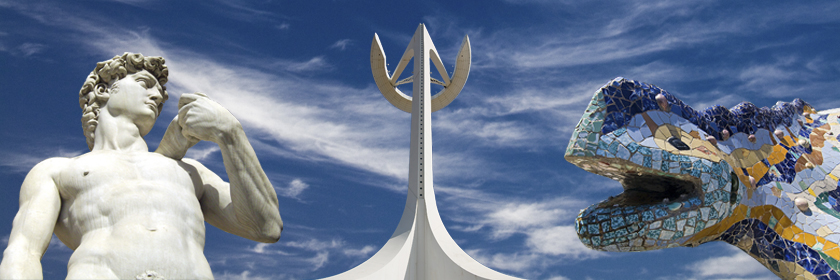




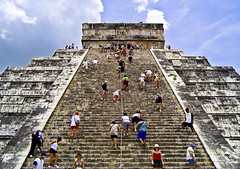


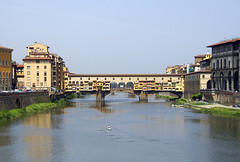




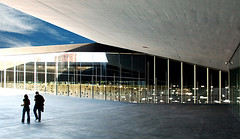


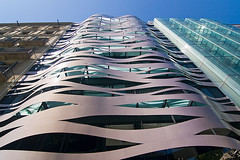



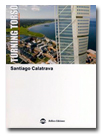

No hay comentarios:
Publicar un comentario